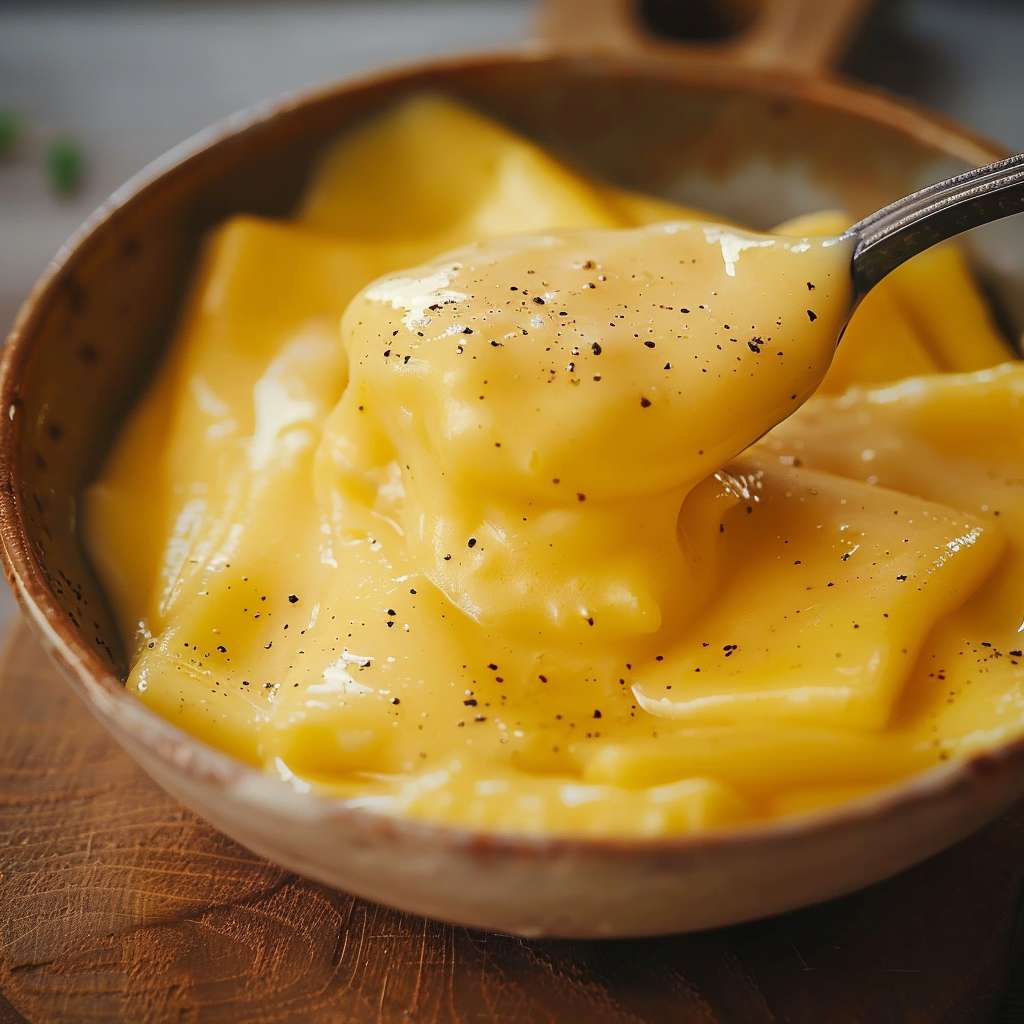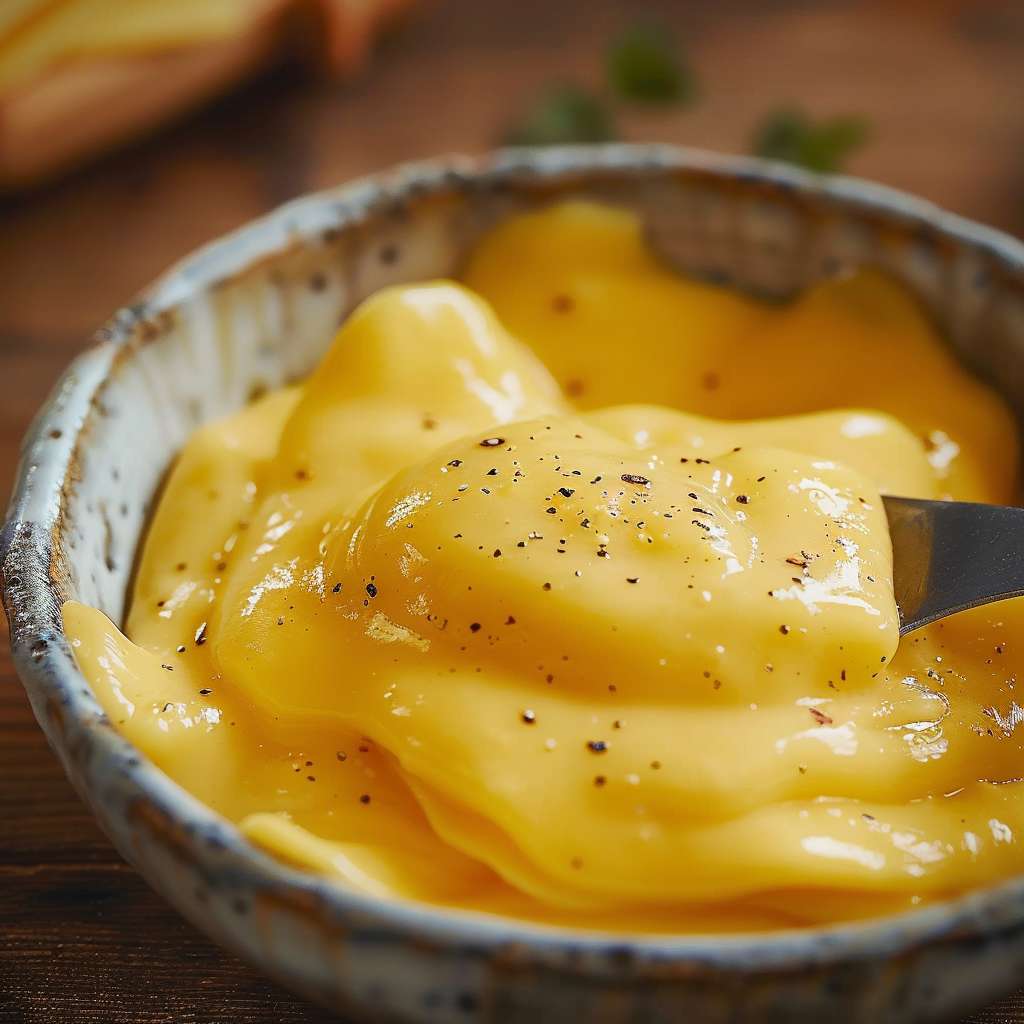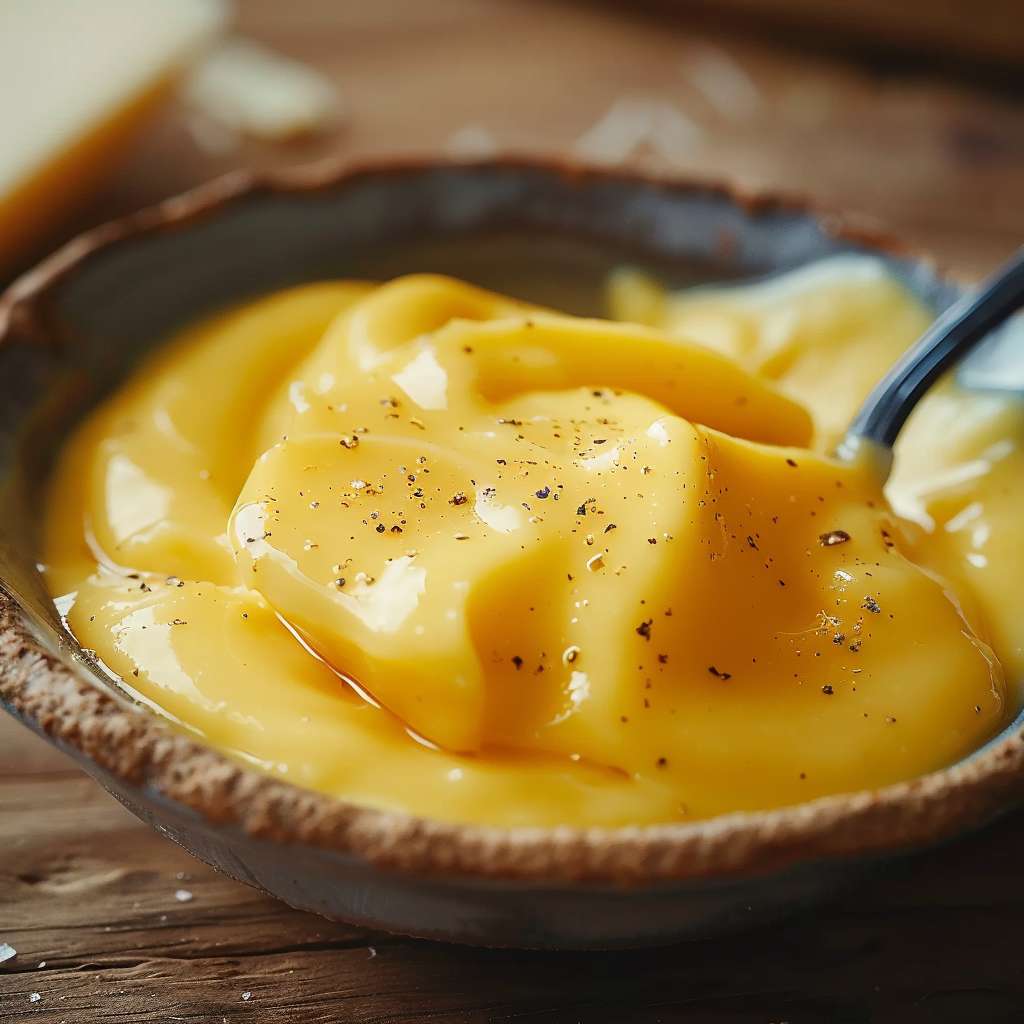Introduction
Homemade cheese sauce is a staple in many kitchens due to its versatility and rich flavor. This creamy sauce can transform a simple dish into a gourmet experience, making it a favorite among both novice and experienced cooks. Whether drizzled over vegetables, used as a dip, or incorporated into main dishes, cheese sauce adds a deliciously creamy texture and savory taste that enhances a wide variety of foods.
The history of cheese sauce dates back to European culinary traditions, where it was commonly used in French and Italian cuisines. Over time, it has become a beloved component in numerous dishes around the world. Today, cheese sauce is popularly used in comfort foods such as macaroni and cheese, nachos, and broccoli with cheese sauce. Its ability to pair well with both casual and sophisticated meals contributes to its enduring popularity.
Understanding the basics of making a good cheese sauce can elevate your cooking to new heights. For tips on selecting the best cheese for your sauce, explore these guidelines on how to choose the best cheese. Additionally, incorporating dairy into your diet offers numerous health benefits, as highlighted in this article on the health benefits of dairy. Embrace the versatility of homemade cheese sauce and enjoy the endless culinary possibilities it offers.
Variations of Cheese Sauce
Alternative Cheeses to Use
One of the best things about homemade cheese sauce is its flexibility. By experimenting with different types of cheese, you can create a variety of flavors to suit any dish:
- Mozzarella: Known for its gooey, stretchy texture, mozzarella is perfect for pizza and pasta dishes. It creates a mild, creamy sauce that’s kid-friendly and versatile.
- Gouda: This Dutch cheese adds a slightly sweet, smoky flavor to your sauce. It’s excellent for pairing with roasted vegetables or meats.
- Blue Cheese: For a bold and tangy twist, try using blue cheese. Its strong flavor pairs well with steak, burgers, and even as a dip for spicy buffalo wings.
Add-ins for Flavor Enhancement
Enhance the basic cheese sauce recipe with a variety of add-ins to boost its flavor profile:
- Garlic: Freshly minced garlic or garlic powder can add a rich depth of flavor. Sauté the garlic in butter before adding the flour for a fragrant base.
- Mustard: A teaspoon of Dijon or whole-grain mustard can give your cheese sauce a subtle tang that complements the richness of the cheese.
- Spices: Experiment with spices like paprika, cayenne pepper, or nutmeg. Paprika adds a smoky note, cayenne offers a spicy kick, and nutmeg provides a warm, nutty flavor.
Different Types of Milk or Cream
The type of milk or cream you use can significantly affect the richness and texture of your cheese sauce:
- Whole Milk: Using whole milk creates a balance between creaminess and lightness. It’s the most common choice for cheese sauce, offering a smooth texture without being too heavy.
- Heavy Cream: For an ultra-rich and decadent sauce, substitute some or all of the milk with heavy cream. This is ideal for special occasions or when you want to impress your guests.
- Non-Dairy Milk: If you prefer a dairy-free option, use unsweetened almond milk, cashew milk, or coconut milk. These alternatives can still provide a creamy texture, especially when thickened with a bit of cornstarch.
Common Uses for Cheese Sauce
Popular Dishes That Benefit from Cheese Sauce
Cheese sauce is a versatile ingredient that can elevate a wide variety of dishes. Here are some popular dishes that are even better with a creamy cheese sauce:
- Macaroni and Cheese: A classic comfort food, macaroni and cheese becomes irresistible with a rich, homemade cheese sauce.
- Nachos: Drizzle cheese sauce over tortilla chips and top with jalapeños, sour cream, and salsa for the perfect party snack.
- Broccoli: Cheese sauce can turn simple steamed broccoli into a delectable side dish that even picky eaters will love.
Creative Ways to Incorporate Cheese Sauce into Meals
In addition to the classics, there are many creative ways to use cheese sauce to enhance your meals:
- Baked Potatoes: Spoon cheese sauce over baked potatoes for a quick and delicious topping. Add bacon bits and chives for extra flavor.
- Burgers and Sandwiches: Use cheese sauce as a spread for burgers and sandwiches instead of traditional sliced cheese. It adds a gooey, melty texture that’s hard to resist.
- Breakfast Dishes: Pour cheese sauce over scrambled eggs or an omelet for a luxurious breakfast treat. It’s also great in breakfast burritos or as a dip for breakfast potatoes.
Pairing Cheese Sauce with Different Foods for a Gourmet Touch
Pairing cheese sauce with various foods can add a gourmet touch to your meals:
- Roasted Vegetables: Drizzle cheese sauce over roasted cauliflower, Brussels sprouts, or asparagus for a sophisticated side dish.
- Seafood: A light cheese sauce pairs beautifully with seafood such as lobster, crab, or shrimp. It adds richness without overpowering the delicate flavors of the seafood.
- Pasta: Beyond macaroni and cheese, try cheese sauce with other pasta shapes or even as a base for a creamy lasagna.
Health Benefits and Nutritional Information
Breakdown of the Nutritional Content of Cheese Sauce
Cheese sauce can be a nutritious addition to your meals when made with wholesome ingredients. A typical serving (1/4 cup) of homemade cheese sauce contains:
- Calories: 100-150
- Protein: 5-7 grams
- Fat: 8-10 grams
- Carbohydrates: 3-5 grams
- Calcium: 10-15% of the daily recommended value
The exact nutritional content can vary depending on the type of cheese and milk used.
Health Benefits of Using Natural Ingredients
Using natural ingredients in your cheese sauce not only enhances flavor but also offers several health benefits:
- Cheddar Cheese: Rich in protein and calcium, which are essential for muscle maintenance and bone health.
- Milk: Provides vital nutrients such as vitamin D, potassium, and magnesium.
- Butter: While high in fat, it is a good source of vitamins A, D, E, and K.
Incorporating these ingredients into your diet can contribute to overall wellness. For more information on the health benefits of dairy, visit this article on the health benefits of dairy.
Tips for Making a Healthier Version
If you’re looking to enjoy cheese sauce with fewer calories and less fat, consider these tips:
- Use Low-Fat Milk: Substitute whole milk with low-fat or skim milk to reduce the calorie and fat content while maintaining a creamy texture.
- Reduce Butter: Use less butter or replace it with a small amount of olive oil to cut down on saturated fats.
- Add Vegetables: Incorporate pureed vegetables such as cauliflower or butternut squash into the sauce. This adds nutrients and fiber while maintaining a smooth consistency.
By making these adjustments, you can enjoy a healthier version of cheese sauce without sacrificing taste. Embrace the versatility and benefits of natural ingredients to create a delicious and nutritious addition to your meals.
Troubleshooting and Tips
Common Issues When Making Cheese Sauce and How to Solve Them
Making cheese sauce can sometimes be tricky. Here are some common issues and solutions:
- Grainy Texture: This usually happens if the cheese is added too quickly or at too high a temperature. To fix it, remove the sauce from heat and whisk vigorously. Adding a splash of milk can also help smooth it out.
- Separation: If your sauce separates, it might be because of high heat or not enough fat. To remedy this, add a bit more butter or cream and whisk until smooth. Lowering the heat can also prevent separation.
- Thick or Thin Sauce: If the sauce is too thick, gradually whisk in more milk until the desired consistency is reached. If it’s too thin, continue to cook while stirring until it thickens, or add a small slurry of cornstarch and water.
Tips for Preventing a Grainy or Separated Sauce
- Low and Slow: Always melt the cheese over low heat and add it gradually. This helps it melt evenly and integrate smoothly into the sauce.
- High-Quality Cheese: Use high-quality cheese and grate it yourself. Pre-shredded cheese often contains anti-caking agents that can affect the texture.
- Constant Stirring: Stir constantly while the cheese melts. This ensures even distribution of heat and prevents clumping.
Tricks to Achieve the Perfect Consistency
- Roux Base: Start with a roux (equal parts butter and flour) as a thickening base. Cook the roux until it’s bubbly and slightly golden before adding milk. This forms a smooth foundation for your sauce.
- Gradual Addition of Milk: Add milk slowly, whisking continuously to avoid lumps. This method creates a creamy and smooth texture.
- Cheese at Room Temperature: Use cheese that is at room temperature to help it melt more evenly.
FAQs
Can I Make Cheese Sauce Ahead of Time?
Yes, you can make cheese sauce ahead of time. Prepare the sauce as usual, let it cool completely, and then store it in an airtight container in the refrigerator for up to 5 days. Reheat gently on the stove over low heat, stirring frequently to maintain a smooth texture.
How Can I Reheat Cheese Sauce Without It Becoming Grainy?
To reheat cheese sauce without it becoming grainy, heat it slowly over low heat and stir constantly. Adding a splash of milk while reheating can help maintain its creamy consistency. Avoid using high heat, as this can cause the sauce to separate.
What Can I Do If My Cheese Sauce Is Too Thick or Too Thin?
- Too Thick: Gradually whisk in more milk until the desired consistency is reached.
- Too Thin: Continue cooking the sauce while stirring until it thickens. Alternatively, you can add a slurry made of cornstarch and water.
Can I Freeze Cheese Sauce?
Freezing cheese sauce is possible, but it may change the texture. To freeze, let the sauce cool completely and store it in an airtight container. Thaw in the refrigerator and reheat slowly on the stove, stirring frequently. Adding a bit of milk can help restore its original consistency.
Conclusion
A good cheese sauce recipe is a valuable addition to any cook’s repertoire, enhancing a variety of dishes with its creamy richness. By experimenting with different cheeses, add-ins, and milk types, you can tailor the sauce to your taste and dietary preferences. Remember to use high-quality ingredients and follow proper techniques to ensure a smooth and delicious sauce. For more inspiration and tips on making the perfect cheese sauce, check out these cooking with dairy tips. Embrace the versatility of cheese sauce and enjoy creating delicious meals that will impress family and friends.
Print
Easy Homemade Cheese Sauce Recipe
- Total Time: 20 minutes
- Yield: 12 servings 1x
- Diet: Vegetarian
Description
This Homemade Cheese Sauce is versatile and kid-friendly, perfect for everything from broccoli to bread. It’s quick to make and much better than any store-bought version.
Ingredients
- 2 tablespoons butter
- 2 tablespoons all-purpose flour
- 1 cup milk
- 1 cup shredded cheddar cheese
- 1/4 teaspoon salt
- 1/4 teaspoon black pepper
- 1/4 teaspoon garlic powder (optional)
- 1/4 teaspoon paprika (optional)
Instructions
- Melt Butter: In a medium saucepan, melt the butter over medium heat.
- Make Roux: Whisk in the flour and cook for about 1-2 minutes, until it forms a paste and turns a light golden color.
- Add Milk: Gradually whisk in the milk, ensuring there are no lumps. Continue to cook, stirring constantly, until the mixture thickens and starts to bubble.
- Add Cheese: Reduce the heat to low and stir in the shredded cheddar cheese until melted and smooth.
- Season: Season with salt, black pepper, garlic powder, and paprika if desired. Adjust seasoning to taste.
- Serve: Serve immediately over vegetables, pasta, or as a dip.
Notes
- For a spicier sauce, add hot sauce, chili peppers, or cayenne pepper.
- Use different cheeses like Swiss, Gruyère, or Monterey Jack to match your dish.
- Prep Time: 5 minutes
- Cook Time: 15 minutes
- Category: Sauce, Side Dish
- Method: Stove-top
- Cuisine: American
Nutrition
- Calories: 110 kcal
- Sugar: 1g
- Sodium: 142mg
- Fat: 9g
- Saturated Fat: 6g
- Carbohydrates: 2g
- Fiber: 1g
- Protein: 5g
- Cholesterol: 27mg




